Your cart is currently empty!
What My Butchering Process is Like
I butcher my chickens one at a time. When you purchase one of my chickens, it has been butchered as if it was the only chicken in the world. Unlike chicken you buy in a supermarket or even from most farmers markets, my chickens never see another chicken being butchered, they never share the hot water other chickens are dunked in, they never share the ice water other chickens are chilled in. They are not bleached like many commercial chicken. Each of my chickens is processed individually. Before and after each chicken is processed, the work area is disinfected. They are too precious to be treated with less respect.
Here is a description of how a chicken you purchase from me is processed. I have nothing to hide.
Using a piece of netting, I gently herd the chicken into an enclosed pen so that none of the other chickens see me catching the chicken. Once I have the chicken, I immediately cover it with a towel so that it can’t see. Once a chicken can’t see, it becomes very calm.
In the dedicated kitchen I use to process my chickens, I put the chicken in a killing cone and gently pull the head out the bottom of the cone. I make sure to cover the chicken’s head with my hand so that it can’t see a thing.
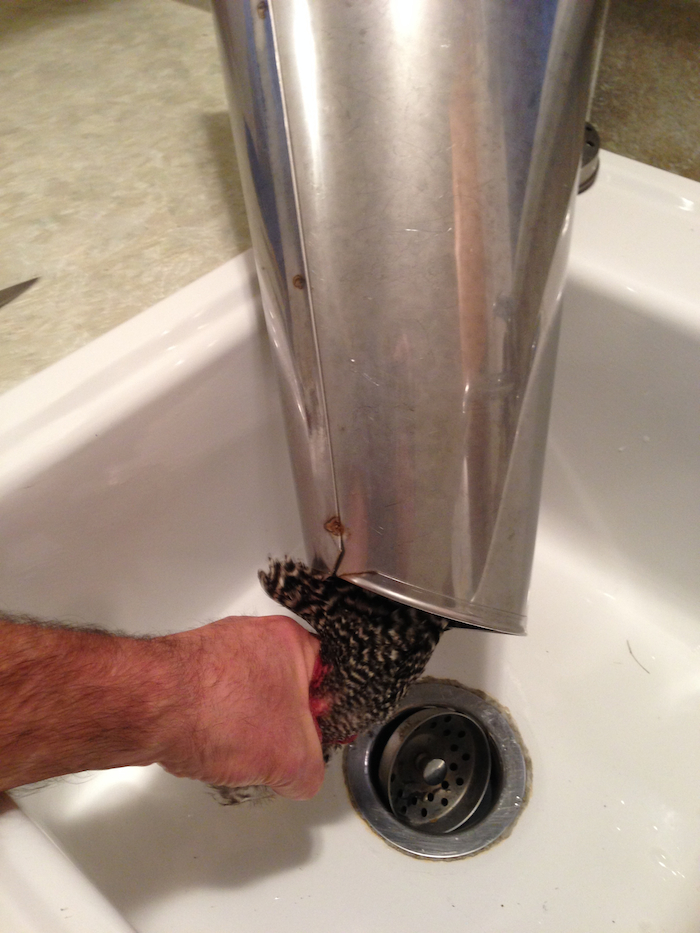
I quickly cut the carotid arteries in the neck. In 30 to 60 seconds the chicken will have bled out and be dead.
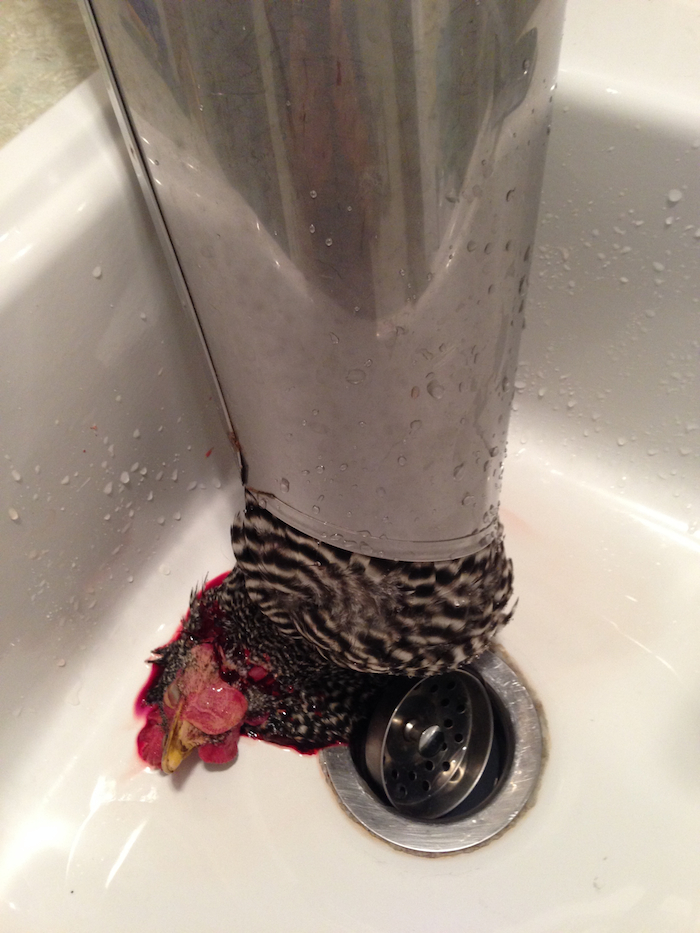
I pull the chicken out of the killing cone and it is now ready to be processed.
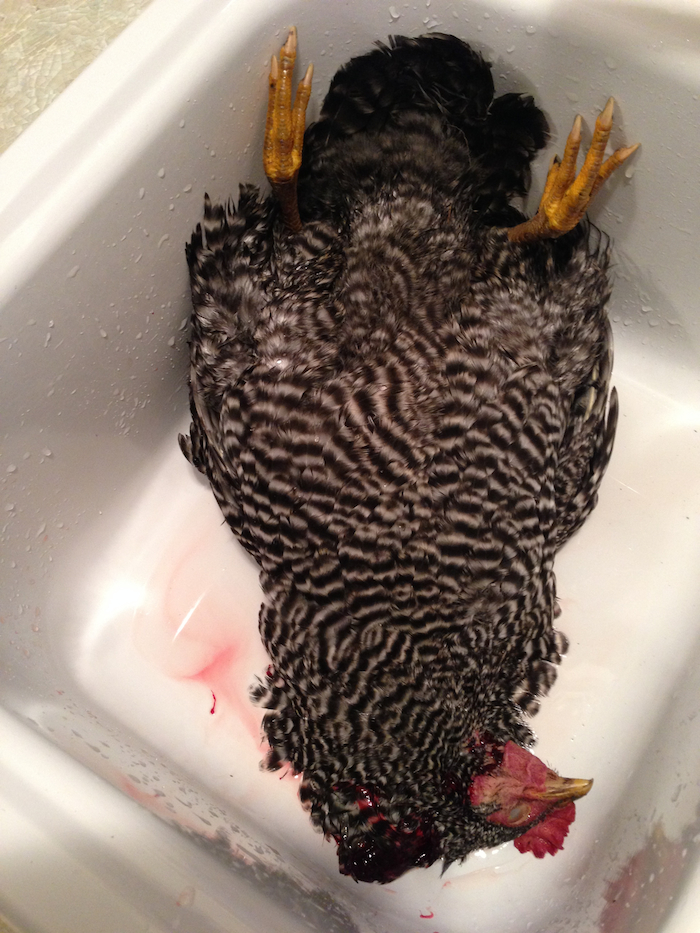
The first step is to dunk the chicken in 145 degree water for a minute or two to loosen the feathers. If you prefer, you can request that I dry pluck your chicken instead.
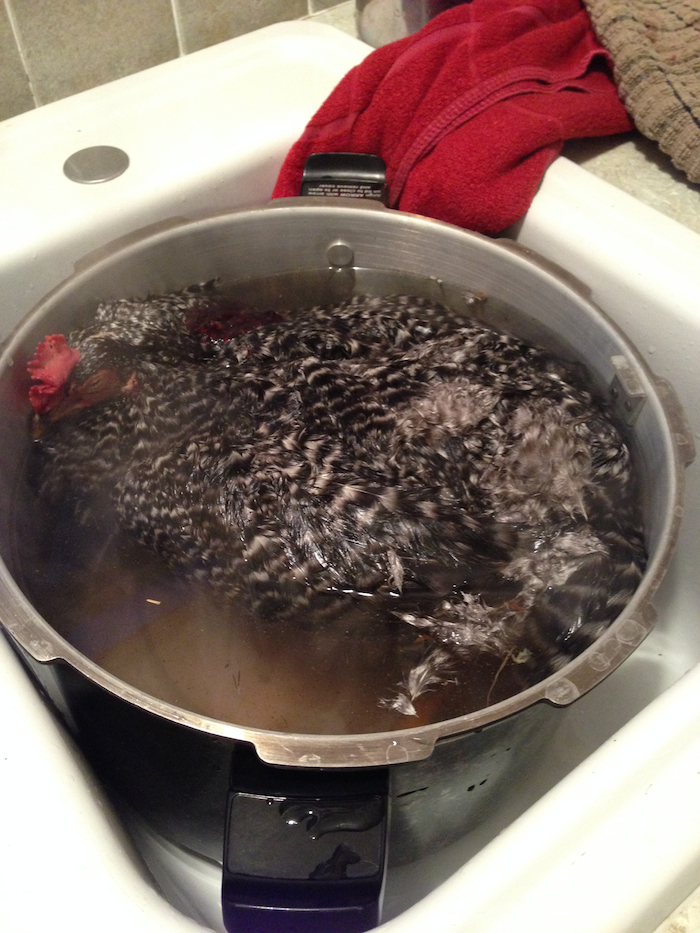
It takes five to ten minutes to hand pluck a chicken.
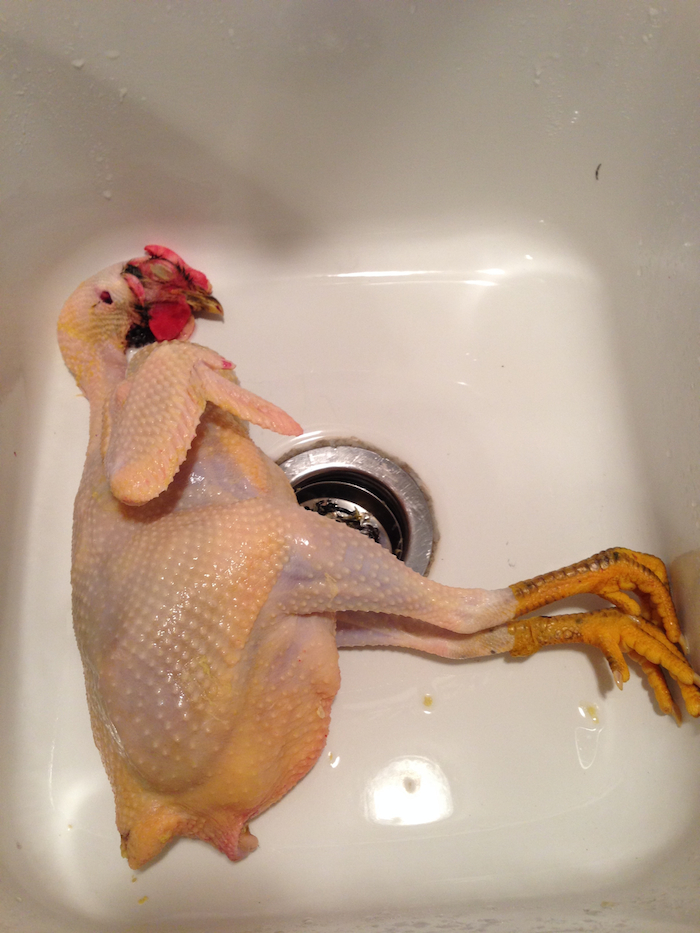
Once I’ve eviscerated the chicken, I truss it and it is ready to be chilled. The State of Washington requires that I chill the chicken to 45 degrees within 4 hours. Mine chill to that within 2 hours in a freezer. I do not chill them in ice water. Once they are chilled to 45 degrees, they are moved into a refrigerator and kept there until you pick them up. They are never frozen.
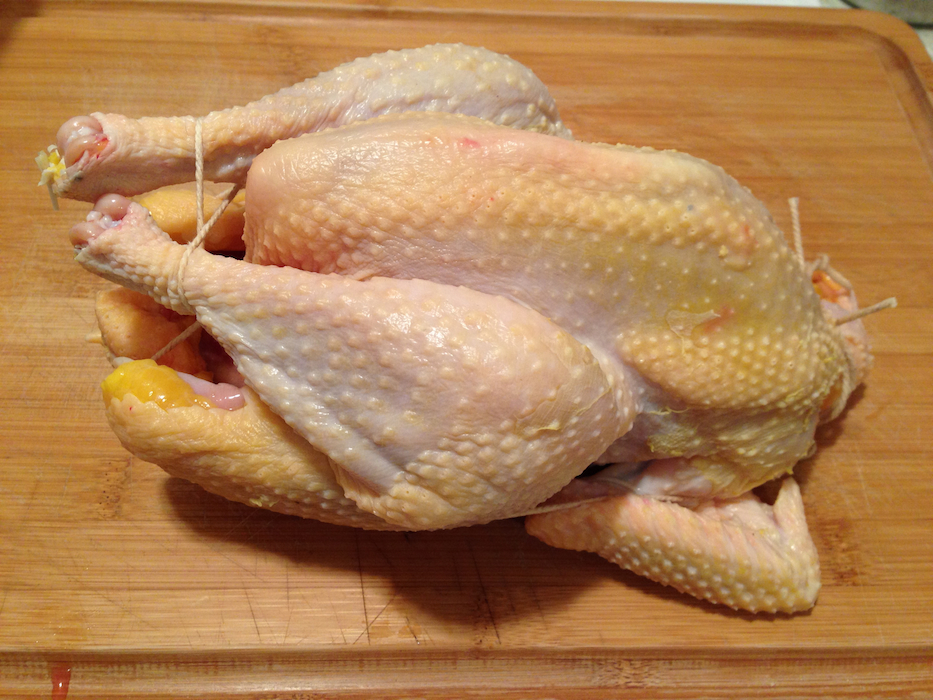
These free roaming, grass and bug eating, running/flying chickens have remarkable meat, liver, and gizzards. But their fat is amazing. It is creamy, soft and yellow. You can use it, as is, to fry.
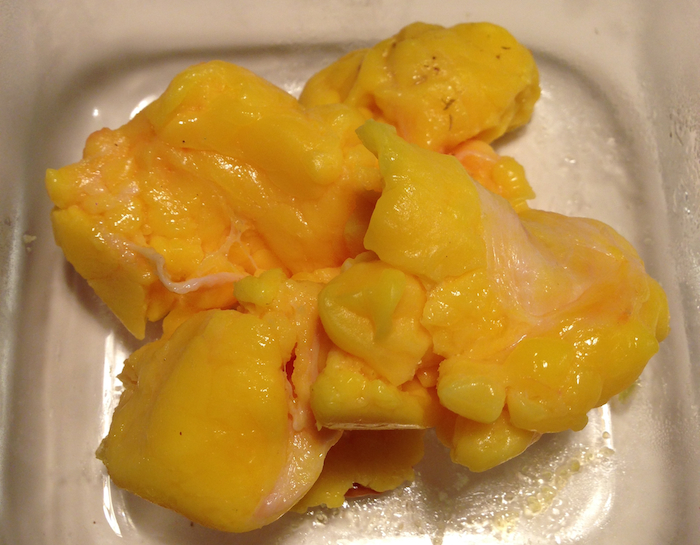
Comments
5 responses to “What My Butchering Process is Like”
-
We just got done butchering our old laying hens & I was amazed at the amount of fat and the deep yellow color. I was beginning to wonder if the color was normal because all of the websites I looked at for how to render the fat showed fat that was basically white. I am glad to see your results match mine. So, I don’t need to render it? Can I freeze it as is?
-
I think one of the reasons that the chicken fat you see in stores and in the online butchering videos is that the chickens being butchered are very young, from six to twelve weeks old. Also, the chickens shown in many of those videos aren’t the breeds that go roaming far and wide for food. They don’t develop the rich yellow fat of heritage birds. Yellow fat is an indicator that the fat has beta carotene and omega-3. If chickens have access to green grass, their fat will be more yellow. I’ve never rendered mine as I use it up too fast to bother. If you have a lot from doing many chickens, it might make sense to render it to remove any non-fat bits from it. I don’t see why you couldn’t freeze it.
-
Thanks for the very prompt reply.
-
Thank you. Thank you for sharing with us how you completely respect this gift of a creature, not just as a living thing, but as a gift from above to nourish our bodies with its life. And thank you for sharing your process. This is EXACTLY how I’d like to do it when we move out to our property and raise chickens, pigs, cows, etc. Both of my parents were raised on farms, but moved out to the “city” when they got married. I honestly never thought I’d want a homestead complete with livestock, but after learning about where our food comes from, the horrible factory farms and GMO, toxic feed, etc, I look forward to knowing where our meals come from, and lovingly show the utmost respect for these animals that the Lord gave us to nourish our lives, and you’ve just given me the insight on exactly how that would be done. Thank you so much. God bless you.
-
You’re welcome. Watching your food grow and connecting to the earth is an adventure. You’ll learn something new every day.
Leave a Reply
You must be logged in to post a comment.